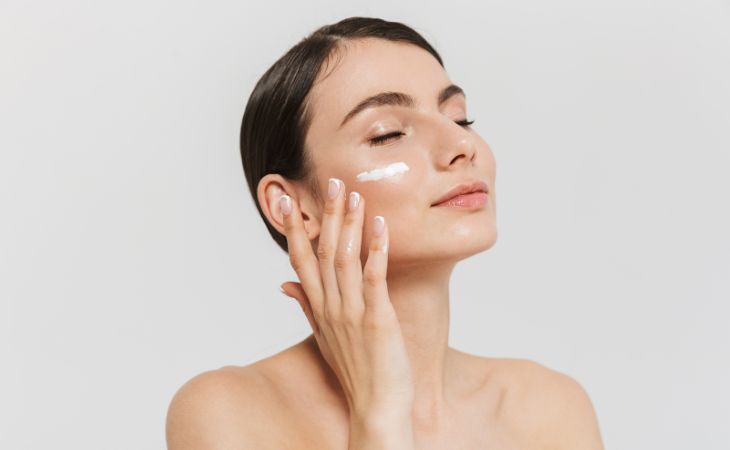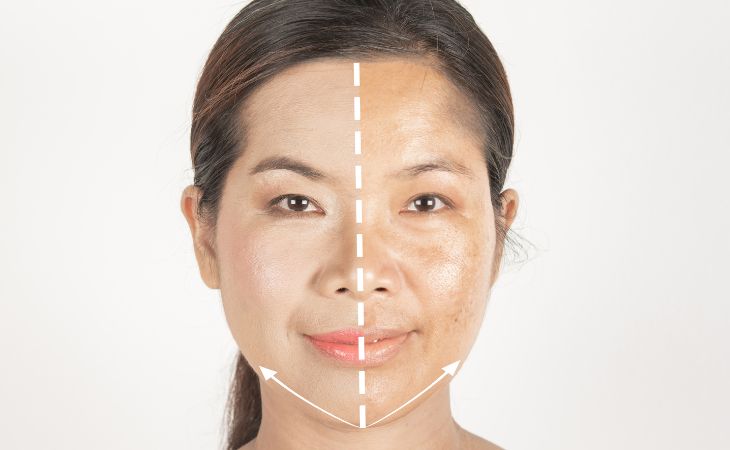
Vitamin C, also known ascorbic acid, is a widely recommended compound by dermatologists due to its numerous benefits for the skin. Dr. Deirdre Hooper, a dermatologist from New Orleans, explains that there have been extensive studies showcasing the effectiveness of vitamin C as an anti-aging agent. It acts as an antioxidant, shielding the skin from air pollution and preventing the production of pigments. Additionally, it stimulates collagen production in the skin, which has been proven in a 2014 study.
However, Dr. Hooper emphasizes that vitamin C's potency depends on its formulation: "vitamin C can only exhibit such powerful effects when combined with the right ingredients." The challenge with using pure ascorbic acid is its instability when exposed to sunlight. To ensure stability and maximize results, Dr. Hooper advises seeking products containing L-Ascorbic Acid - the most stable form of vitamin C - or products that include both vitamin E and ferulic acid.

Another noteworthy acid is azelaic acid, which originates from a type of fungus naturally present in our skin. This particular acid offers an excellent solution for black spots on the skin. In fact, a research review from 2014 even suggests that it could be an effective treatment for melasma - a condition characterized by tan or darkened skin color observed in pregnant women or those using birth control or hormone replacement therapy.
Dr. Noelani Gonzalez, a specialist in dermatology at Sinai Hospital in New York, explains that the use of azelaic acid can disrupt the skin's pigmentation process by inhibiting the enzyme tyrosinase. This particular enzyme plays a significant role in the production of melanin pigment. By reducing its activity, azelaic acid essentially reduces the amount of pigment produced by the body over time, resulting in lighter skin tone.
Additionally, if you suffer from rosacea, your dermatologist may recommend treatment with azelaic acid. This is because it has been found to effectively reduce redness, swelling, and inflammation associated with this condition.

This acid efficiently infuses moisture into the skin and has the ability to attract water from its surroundings, weighing 1,000 times more than its own weight. When applied to the skin, products containing this acid prevent sagging of the outer layer, soften wrinkles, and even enhance the natural glow of the skin. According to Dr. Sikora, this acid has its limitations as well. Due to its large molecular size, it is unable to penetrate deep into the dermis (the innermost layer of the skin) when used in topical preparations. As a result, it does not promote collagen production in these preparations alone.
To stimulate collagen synthesis with this acid's help, deep injections are required for it to reach deeper layers of the skin where collagen production occurs naturally. These injections effectively treat deep wrinkles and provide substantial volume to rejuvenate aged or damaged skin.

Key Points about Using Acids for Skincare:
1. Ensure you select an appropriate acid based on your specific skincare needs.
2. Conduct thorough research on different types of acids before incorporating them into your routine.
3. Consult with a dermatologist or skincare professional if you are uncertain about which acids are suitable for your skin type.
4. Always follow instructions provided by product manufacturers when using acid-based skincare products.
5. Wear sunscreen during daytime as some AHAs can increase sun sensitivity
According to a study published in 2012, certain skincare preparations that include the acids discussed in this guide can increase skin sensitivity to the sun. As a result, it is strongly advised to apply a sunscreen along with these products in order to maintain skin health. Additionally, it is highly recommended to seek guidance from a dermatologist, who can assist you in identifying the most appropriate acids for your specific skin type.